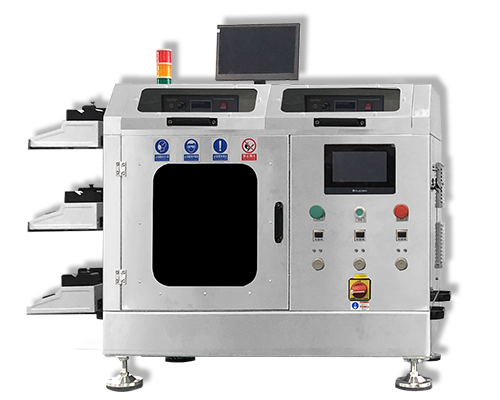What is heart valve disease?
What is heart valve disease? Drug coating technologies – Cheersonic
The heart can be compared to a house, each chamber is like a separate room, and the valve is the door of the room. Heart valves are divided into atrioventricular valves and arterial valves. The atrioventricular valve is the “door” that connects the atrium to the ventricle, the mitral valve that connects the left atrium to the left ventricle, and the tricuspid valve that connects the right atrium to the right ventricle. The arterial valve is the “door” that connects the ventricle to the artery. The aortic valve, which connects the left ventricle to the aorta, and the pulmonary valve, which connects the right ventricle and the pulmonary artery. Heart valves are like the door to a house, and sometimes they can’t close and can’t be opened.
Heart valve disease classification
Heart valve disease refers to congenital dysplasia or various other diseases (rheumatic, degenerative, infection, connective tissue disease, trauma, etc.) caused by heart valve and its accessory structures (including valve annulus, valve leaflets, chordae tendineae, papillary muscles) etc.) anatomical structural or functional abnormalities, resulting in acute or chronic stenosis and/or insufficiency of single or multiple valves, resulting in significant changes in cardiac hemodynamics, not only leading to structural abnormalities and dysfunctions of the atrium or ventricle, but also ultimately Clinical syndromes such as heart failure and arrhythmia occur.
01. Mitral valve stenosis
The clinical manifestations of mitral stenosis are mainly caused by low cardiac output and pulmonary vascular disease. Clinically, there may be fatigue, progressive dyspnea on exertion, acute pulmonary edema, cough and expectoration of sputum, bloody or bloody sputum in the sputum after sleep or activity at night; loss of appetite, abdominal distension, nausea and other symptoms may occur in the case of right ventricular failure.
The purple-red cheeks and mild cyanosis of the lips are typical features of mitral valve stenosis. Systolic lift-like beat at the left sternal border. The typical murmur of mitral stenosis is a low-pitched, increasing rumbling murmur confined to the apical region in the middle and late diastole.
02. Mitral valve insufficiency
Common symptoms are: exertional dyspnea, orthopnea, fatigue, and significantly decreased activity tolerance. In the late stage, liver congestion, swelling and tenderness, edema, pleural effusion or ascites and other manifestations of right heart failure appear.
The cardiac border expands to the lower left, the apex area can be touched with limited systolic lifting-like beat, and the apex area can be heard and full-systolic blow-like murmur, with a loudness above grade 3/6, weakened during inspiration, high-pitched when the regurgitation flow is small, valve Thickened and rough. with systolic tremor.
03. Aortic valve stenosis
The three typical symptoms of aortic stenosis are exertional dyspnea, angina pectoris, amaurosis or syncope. Early manifestations are not typical. Fatigue, emotional agitation, and infection can induce acute pulmonary edema, and in the late stage, intractable left heart failure and reduced cardiac output, and even right heart failure may appear.
A systolic lift-like pulse was palpable in the apex area, and a low-key, rough, loud jet systolic murmur typical of aortic stenosis could be heard in the second intercostal space at the right sternal border.
04. Aortic insufficiency
Common symptoms are palpitations, exertional dyspnea, chest pain, syncope, as well as fatigue and significantly decreased activity tolerance. Early symptoms mainly appear during exercise or stress, and late symptoms may include obvious left heart failure symptoms such as orthopnea, paroxysmal nocturnal dyspnea, and liver congestion and swelling, tenderness, ankle edema, and pleural effusion. Clinical manifestations of heart failure.
The cardiac border expands to the lower left, and the apical beat is shifted to the lower left, with a wider range and a lifting-like beat. Typical auscultation of the aortic area is a high-pitched and decreasing gas-like murmur in the diastolic phase, which is obvious in the sitting position, leaning forward, and at the end of expiration, and is often accompanied by diastolic tremor.
Diagnosis of heart valve disease
Combining clinical manifestations and cardiac auscultation is the first step in diagnosing valvular disease. Any patient with a pathological murmur should undergo further echocardiography to confirm or rule out the diagnosis of valvular heart disease. For patients with definite valvular heart disease, the etiology should be further searched and the presence or absence of comorbidities should be assessed.
Treatment of heart valve disease
Treatment of valvular heart disease includes drug therapy, interventional therapy, and surgery. Drug treatment can not solve the problem from the root, mainly for the treatment of symptoms and complications. For example, when combined with atrial fibrillation, ventricular rate control and anticoagulation treatment; anti-heart failure drug treatment for patients with combined heart failure. Of course, drug therapy is also a transition before intervention and surgery.
The fundamental treatment of heart valve disease mainly relies on surgery, including traditional surgical valve replacement, valve repair and so on. In recent years, various minimally invasive surgeries have become increasingly mature, and transcatheter valve interventional therapy technology has developed vigorously. How to choose a specific surgical method needs to consider comprehensive factors such as the patient’s age, symptoms and cardiac function, complications and the experience of the operator, and the patient’s life expectancy.
Ultrasonic nozzles are particularly suitable for a wide range of medical coating applications due to their very precise, non-blocking, repeatable spray performance and extremely low flow rate capability. For several years, Cheersonic has been providing ultrasonic medical coating system to medical device manufacturers worldwide. As medical device technology evolves, we will continue to design unique medical coating ultrasonic spray solutions to enhance patient safety and provide the highest quality medical device coating on the market.
Cheersonic is the leading developer and manufacturer of ultrasonic coating systems for applying precise, thin film coatings to protect, strengthen or smooth surfaces on parts and components for the microelectronics/electronics, alternative energy, medical and industrial markets, including specialized glass applications in construction and automotive.


